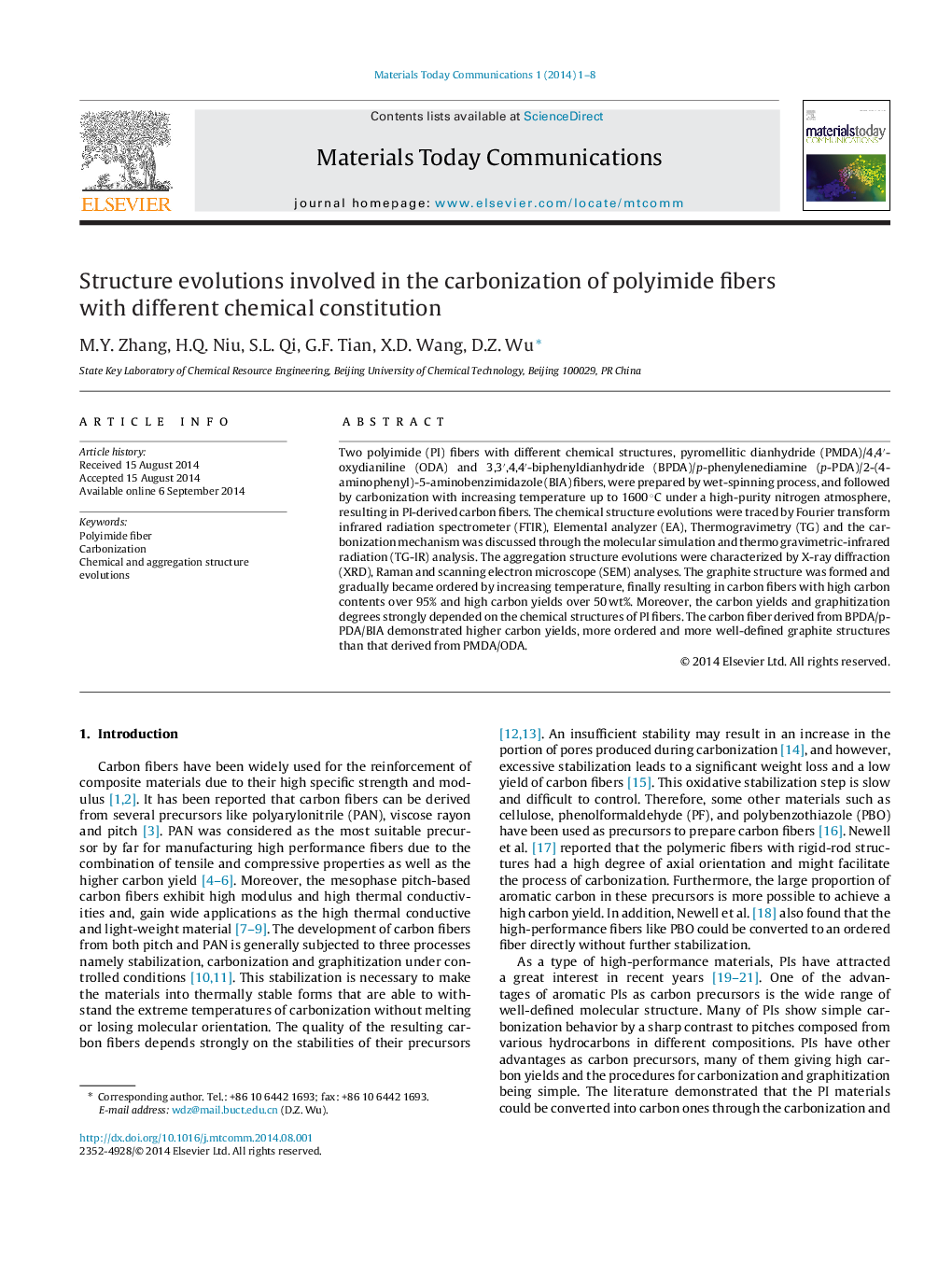| Article ID | Journal | Published Year | Pages | File Type |
|---|---|---|---|---|
| 1586274 | Materials Today Communications | 2014 | 8 Pages |
Two polyimide (PI) fibers with different chemical structures, pyromellitic dianhydride (PMDA)/4,4′-oxydianiline (ODA) and 3,3′,4,4′-biphenyldianhydride (BPDA)/p-phenylenediamine (p-PDA)/2-(4-aminophenyl)-5-aminobenzimidazole (BIA) fibers, were prepared by wet-spinning process, and followed by carbonization with increasing temperature up to 1600 °C under a high-purity nitrogen atmosphere, resulting in PI-derived carbon fibers. The chemical structure evolutions were traced by Fourier transform infrared radiation spectrometer (FTIR), Elemental analyzer (EA), Thermogravimetry (TG) and the carbonization mechanism was discussed through the molecular simulation and thermo gravimetric-infrared radiation (TG-IR) analysis. The aggregation structure evolutions were characterized by X-ray diffraction (XRD), Raman and scanning electron microscope (SEM) analyses. The graphite structure was formed and gradually became ordered by increasing temperature, finally resulting in carbon fibers with high carbon contents over 95% and high carbon yields over 50 wt%. Moreover, the carbon yields and graphitization degrees strongly depended on the chemical structures of PI fibers. The carbon fiber derived from BPDA/p-PDA/BIA demonstrated higher carbon yields, more ordered and more well-defined graphite structures than that derived from PMDA/ODA.
Graphical abstractFigure optionsDownload full-size imageDownload as PowerPoint slide
